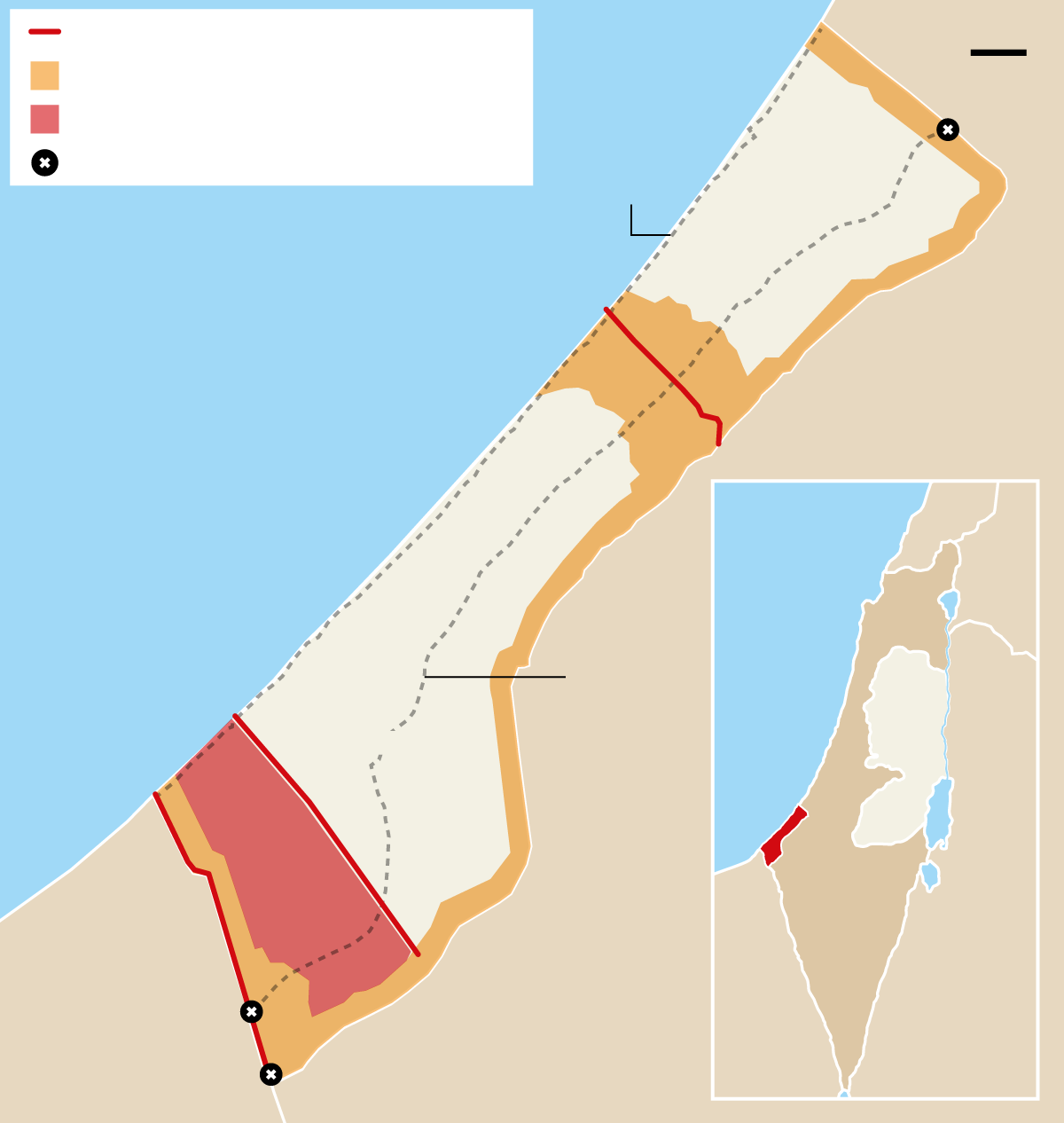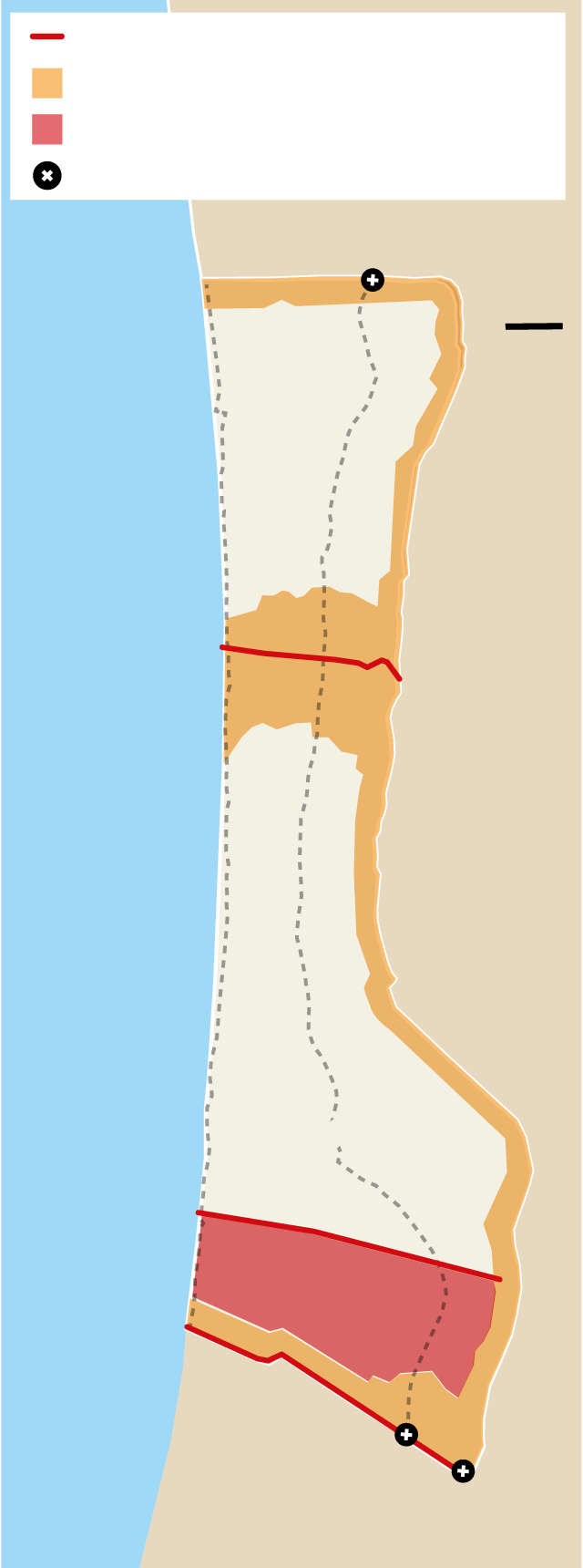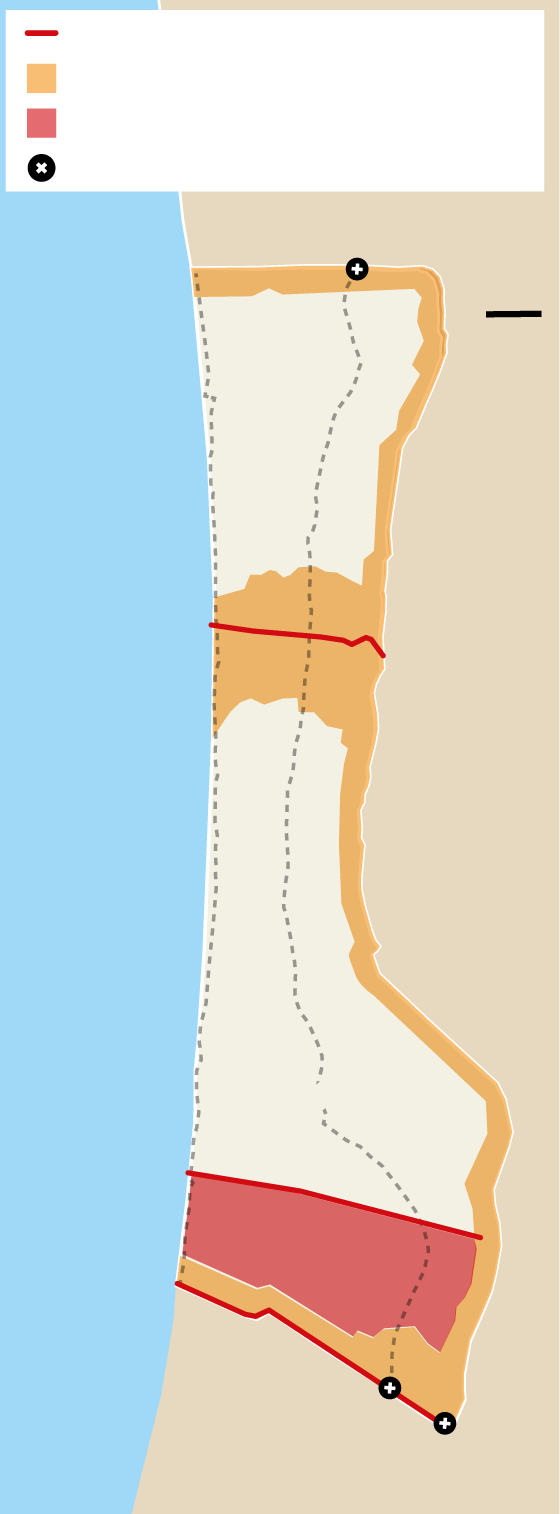Israel plans to absorb the city of Rafah into the Gaza "security zone," according to Haaretz.
The Hebrew army wants to take control of a fifth of the enclave, where 200,000 people lived before the war.

BarcelonaIsrael is preparing to incorporate the city of Rafah and surrounding areas into the "pillow zone" it is expanding along the border, the Israeli newspaper reported Wednesday. Haaretz, citing army officials on condition of anonymity. Specifically, the Hebrew armed forces intend to absorb the area between the Philadelphia Corridor, which borders Egypt, and the Morag Corridor, a corridor created by the army and cuts through agricultural land between Rafah and Khan Yunis. This would represent an area occupying one-fifth of the Gaza Strip—about 75 square kilometers—where more than 200,000 Palestinians lived before the war.
When Israel unilaterally broke the ceasefire on March 18., ordered residents of Rafah and surrounding neighborhoods to move to the so-called humanitarian zone on the coast, between Khan Yunis and Al-Mawasi.
The newspaper notes that expanding the "security zone" or "pillow zone" in this area in the south of the Strip will have significant implications, not only because of its size, but also because it would turn Gaza into an enclave within Israeli-controlled territory, completely cut off from the border with Egypt. The army is preparing to concentrate its operations in areas where it believes it can put the most pressure on Hamas, and in this regard, Rafah plays an important role.
According to defense sources, it is not yet decided whether this entire area of Rafah will be turned into a closed military zone inaccessible to civilians, as has been done in other parts of the dividing line, or whether the army will demolish entire neighborhoods, effectively eliminating the city, it indicates. HaaretzThe newspaper claims that the army is already working to expand into the Morag corridor –which occupied last week– and is demolishing buildings in this area. This information comes days after Israel announces its intention to occupy "large areas" of Gaza.
When the war began in October 2023, the Israeli military announced it would create a buffer zone along the border with the Gaza Strip to reduce the risk to Israeli communities living on the other side, a defense strategy Israel has used for decades.
Completely demolished areas
According to a report published this week by the Israeli NGO Breaking the Silence, founded by veterans critical of the country's military policies, before the war, the buffer zone between Israel and the Gaza Strip extended approximately 300 meters into Palestinian territory, with limited access. However, since October 2023, the perimeter has been expanded to 1,500 meters in some areas. This has meant the complete demolition of 16% of the Gaza Strip, some 55 square kilometers that previously contained about 35% of Gaza's agricultural land. However, this perimeter has been expanded since Israel resumed its offensive three weeks ago. Added to this are the forced evacuation orders issued by the army, and Palestinians cannot access more than 50% of Gaza's territory, according to UN data from early April.
According to the Breaking the Silence document, which is based on eyewitness accounts from soldiers deployed in Gaza, the military was tasked with "creating an empty, completely flat expanse about a kilometer wide" along the Gaza side of the border fence. "This space was to be free of crops, structures, and people," it says, adding that soldiers were ordered to prohibit access, if necessary with live fire. "The soldiers were ordered to deliberately, methodically, and systematically annihilate everything within the designated perimeter, including entire residential neighborhoods, public buildings, educational institutions, mosques, and cemeteries, with very few exceptions," the report states.



